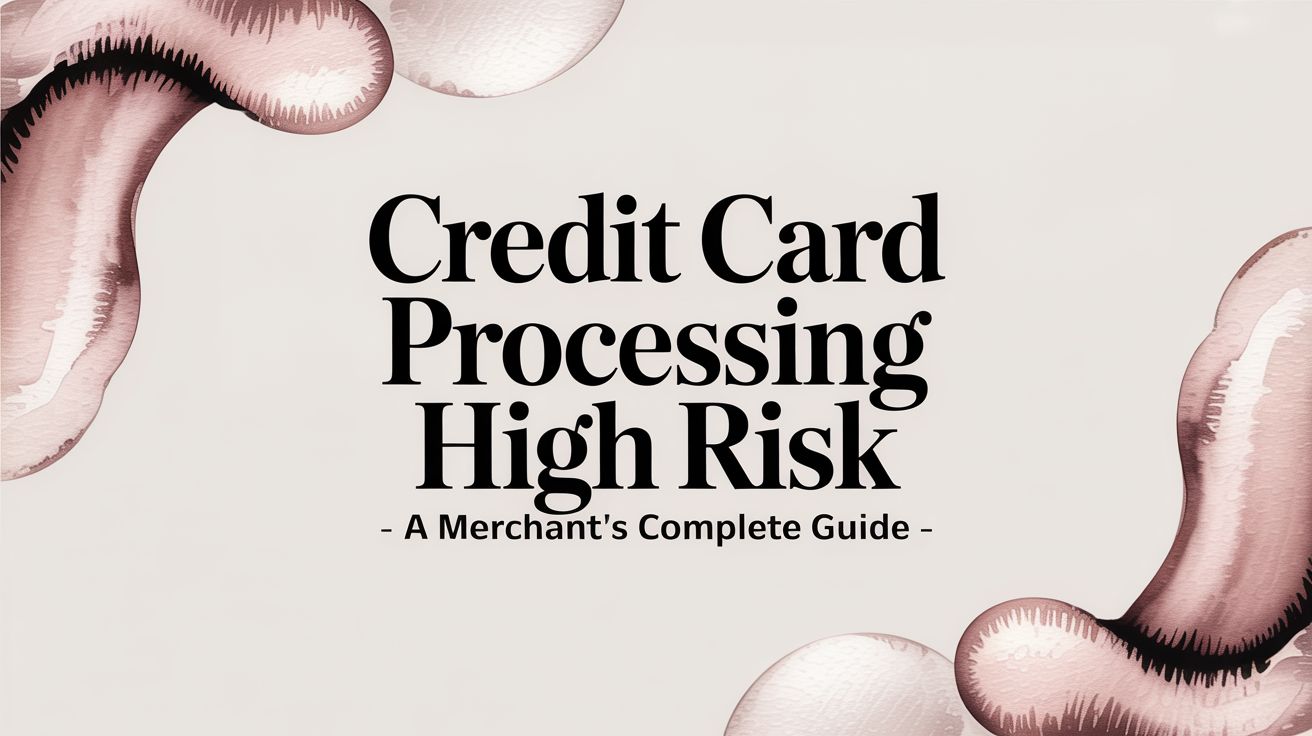
How can businesses effectively reduce chargebacks and protect their revenue?
Chargeback is a challenge resulting in lost profits, poor reputations, and strained relationships with payment processors.
Rising online transactions, coupled with increasing fraud and disputes , has made chargeback management more critical.
Businesses must mitigate chargebacks and have systems in place to address disputes efficiently.
In this guide, we have provided actionable strategies to reduce chargebacks, prevent fraudulent activity, and maintain sustainable payment operations.
Why do chargeback disputes happen?
Chargeback disputes happen when customers contact their issuing banks to reverse a transaction based on different conditions. Payment reversal is requested when customers believe they were charged incorrectly, the product or service they requested was not provided, or suspect fraudulent activity via stolen cards.
Common causes for chargebacks are:
1. Fraudulent Transactions
Unauthorized purchases or identity theft lead to this dispute. Customers who suspect unidentified transactions in their accounts file a dispute to recover their money.
2. Product or Service Dissatisfaction
Customers initiate such a chargeback if the item they received is defective, different from its mentioned description, or if a service was not delivered as promised by the company.
3. Merchant Errors
Merchants can also make mistakes such as duplicate charges, incorrect billing or taxes, or failure to deliver. Upon these errors, customers are prone to dispute incorrect transactions.
4. Unclear Policies
Uncertainty in return, refund, or cancellation policies results in customers filing chargebacks. When unsure how to resolve their issue they contact their issuing bank.
5. Friendly Fraud
In most cases as per statistics, customers file chargebacks for legitimate purchases out of confusion or to bypass merchant return policies. This type of dispute is known as "friendly fraud" and is the most challenging form to mitigate.

Ways for businesses to reduce the frequency of chargebacks
Reducing chargebacks is imperative to protect finances and maintain sustainable relationships with banks and payment processors. Because a higher chargeback ratio can expose businesses to high risk by adding more penalties.
Here are ten expert strategies businesses can adopt to minimize the frequency of chargebacks significantly:
1. Implement Advanced Fraud Detection Tools
Advanced fraud detection systems, particularly AI-powered, can reduce chargeback frequency by identifying potentially fraudulent transactions in real-time.
These systems analyze data points like transaction history, user behavior, and device fingerprinting to flag high-risk activities.
For instance, a system may detect when a transaction originates from an unusual location or if a user is employing multiple credit cards within a short time. By stopping such transactions businesses will stop fraudulent purchases leading to chargebacks.
According to Juniper Research, AI-driven fraud detection is expected to save merchants $10 billion annually by 2025, largely due to the reduction in chargebacks and fraudulent activity.
2. Use Clear and Accurate Billing Descriptors
One of the most common causes of chargebacks is when a customer fails to recognize a charge on their credit card statement.
Confusing billing descriptors (such as using a parent company’s name rather than the recognizable brand or service name) often lead customers to dispute correct transactions.
Ensuring that the billing descriptor includes a brand name and a brief product description helps customers recall the purchase and avoid disputes.
For instance, instead of “UrbanGo,” use “UrbanGo - Online Sustainable Store.” According to a survey by Visa, 35% of chargebacks stem from unclear or confusing billing descriptors.
3. Maintain Transparent Product Descriptions
Misleading product descriptions or images will lead to chargebacks. To reduce disputes related to "item not as described," ensure your product listings are clear, detailed, and accurate.
Include high-quality photos, videos, and precise information about dimensions, materials, and functionality.
For service-based businesses, transparency about what the service entails, including any limitations or exclusions, helps fulfill customer expectations.
4. Establish Clear Return, Refund, and Cancellation Policies
Customers can file chargebacks because they are unaware of a business’s return or refund policy.
To minimize disputes, it’s crucial to have clear, easy-to-understand policies in place. Ensure these policies are visible at critical customer touchpoints, such as during checkout or on the order confirmation page.
Make it easy for customers to request returns or refunds through your support system.
For example, a simple online form for returns and refunds reduces the likelihood of a chargeback.
The Federal Trade Commission recommends making these policies as transparent as possible to prevent disputes, which can lead to a reduction in chargeback rates by 20-30%.
5. Offer Excellent Customer Support
Timely and effective customer support can prevent many disputes from escalating into chargebacks.
When customers can easily contact your team to resolve an issue, they are less likely to go directly to their bank to reverse the charge. Provide multiple contact methods, such as phone, email, and live chat, and ensure response times are quick.
An Accenture study found that customers prefer to resolve issues with the merchant before filing a chargeback if they believe they will receive prompt assistance.
Additionally, creating a dedicated chargeback resolution team within customer support can help mitigate disputes before they reach the bank level.
6. Monitor Transactions with Velocity Limits
Velocity checks help identify patterns of fraud before converting to chargebacks. For example, setting limits on transactions a single customer can make will block potential fraud.
This stops fraudsters from using stolen cards to make multiple purchases rapidly. Businesses can customize velocity limits based on their risk tolerance.
According to Checkout, businesses with velocity checks mitigate card-not-present fraud by up to 25%, by catching abnormal purchasing behaviors.
7. Utilize Chargeback Alerts and Notifications
Services like Ethoca and Verifi offer real-time chargeback alerts when customers dispute a transactions. Alerts give a chance to address the issue before the dispute becomes an official chargeback.
Offering a refund or resolving customer's complaint aptly, business will mitigate the chargeback from happening.
Ethoca reports that merchants using its real-time alert system experience up to a 40% reduction in chargebacks.
8. Enhance Payment Security Protocols
Strengthening payment security via 3D Secure, CVV verification, and two-factor authentication (2FA) helps reduce fraud and following chargebacks.
Such security layers ensure that the purchase is authorized by the customer. For instance, 3D Secure prompts the customer to verify their identity through their issuing bank thus making it harder for fraudsters to use stolen card information.
According to Nuvei, merchants with 3D Secure experience up to a 70% reduction in fraud-related chargebacks.
9. Analyze Chargeback Data for Patterns
Regularly analyzing chargeback data help identify patterns that will be used improve to processes and reduce future disputes.
For example, excessive chargebacks related to a particular product indicate a quality or delivery issue. Similarly, chargebacks from a specific region point to a need for tighter fraud controls with IP identification.
Understanding these trends help businesses modify operations, tighten fraud detection for high-risk products and improving product quality. Ultimately the will reduce the chargeback rates in months to follow.
By integrating these detailed, actionable strategies, businesses will for sure reduce the frequency of chargebacks, and safeguarding their revenue.
Note: Chargebacks are inevitable, no matter how good the mitigation strategies are. So, what should businesses do after a chargeback dispute?
The answer is Chargeback Management!
Chargeback Management & Mitigation with Chargepay
ChargePay offers a comprehensive, AI-powered solution for managing and mitigating chargebacks.
By integrating advanced predictive analytics and automated dispute resolution, ChargePay helps businesses reduce chargebacks, recover lost revenue, and streamline the entire dispute process.
ChargePay empowers businesses to stay ahead of fraud while optimizing their chargeback representment success.
Whether you're dealing with eCommerce fraud, friendly fraud, or merchant errors, ChargePay’s approach ensures maximum protection and efficiency.
Ready to minimize chargebacks and safeguard your revenue?
Book a demo today and see how ChargePay will transform your chargeback management.







.svg)







.svg)
.svg)
.svg)